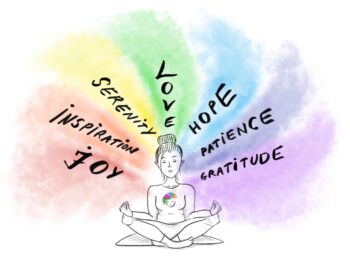Age of Opportunity: Insights from the New Science of Adolescence book by Laurence Steinberg, the complex landscape of adolescence is explored through a lens of psychological and neuroscientific research. As society witnesses a lengthening of this critical phase, Steinberg’s work provides a thought-provoking call to action for parents, educators, policymakers, and anyone vested in guiding the journey of adolescents. This engaging exploration delves into the evolving nature of adolescence and offers valuable insights into how we can better understand, support, and nurture young minds during this pivotal period.
Introduction:
Adolescence, a pivotal phase roughly spanning ages 10-25, has evolved in significant ways. However, current comparisons with past generations reveal that today’s U.S. adolescents encounter challenges in critical areas, and international benchmarks indicate room for improvement. Laurence Steinberg, a respected psychologist and Temple University professor, delves into this realm in his book “Age of Opportunity: Lessons from the New Science of Adolescence,” urging parents, educators, policymakers, and stakeholders to reconsider their approach to guiding and interacting with adolescents.
The Adolescent Brain: A Dynamic Marvel
Steinberg underscores the necessity of investing in adolescence, highlighting that its plasticity is unmatched. Scientific breakthroughs of the past fifteen years have unveiled distinctive aspects of the adolescent brain. Neural connections, maturing at varying rates, undergo reorganization during this period. The more a skill is exercised, the stronger the brain regions supporting that skill become. Key brain systems governing reward-seeking, relationships, and regulatory behaviors undergo significant transformations. Adolescence’s association with heightened memory capabilities aligns with societal trends extending this phase into the twenties.
Evolving Dimensions of Adolescence
A historical perspective reveals that the duration of adolescence has expanded over time. From a five-year span in the mid-1800s, it has stretched to around fifteen years by 2010 and could reach up to twenty years by 2020. Multiple factors, including obesity, stress, and hormonal influences, have hastened this shift. Steinberg warns that premature maturation can contribute to adverse outcomes, such as teen pregnancy, psychological disorders, and school disengagement. However, he posits that judiciously extending adolescence could enhance social and cognitive growth if utilized for meaningful experiences.
Navigating the Risky Terrain
Prolonged adolescence presents challenges, including a lengthier window for risky behavior. Developmental disparities between the limbic system, regulating emotions, and the prefrontal cortex, governing inhibition, contribute to impulsive choices. Adolescents exhibit distinct decision-making patterns, gravitating toward rewards and exhibiting less risk deterrence. This inclination stems from evolutionary adaptations, yet modern contexts demand intervention to minimize harmful behaviors.
Supporting Positive Development
Economically disadvantaged adolescents require additional support. Psychological and neurobiological capital—essential noncognitive skills and advantages from brain plasticity—are often lacking in low-SES individuals. Self-control, crucial for success, can be cultivated through mindfulness practices, exercise, and memory-enhancing interventions. Authoritative parenting, characterized by warmth, firmness, and support, fosters productive development. Educators play a vital role by embracing this approach, promoting engaging academics, and teaching self-regulation.
Guiding Policy and Practice
Policy initiatives must align with evolving insights into adolescent well-being. Health education, driving regulations, and criminal justice frameworks warrant reconsideration. Historical efforts have aimed at survival, yet adapting to new brain research and cultural shifts can usher in policies focused on thriving.
In “Age of Opportunity,” Laurence Steinberg unveils a compelling narrative of the modern adolescent experience. By embracing scientific discoveries and understanding the fluidity of adolescence, parents, educators, and policymakers can pave the way for a brighter future for the youth of today and tomorrow.








